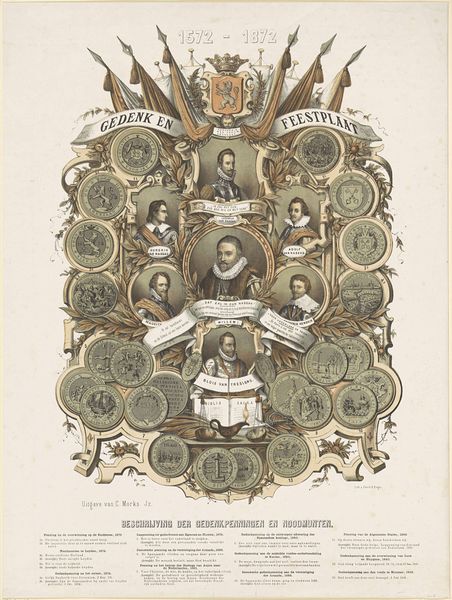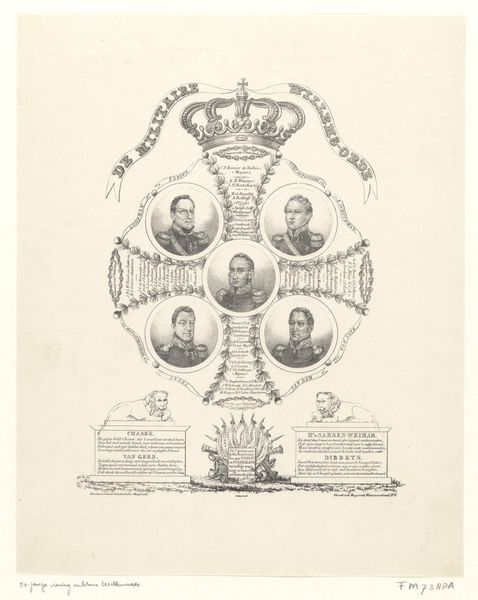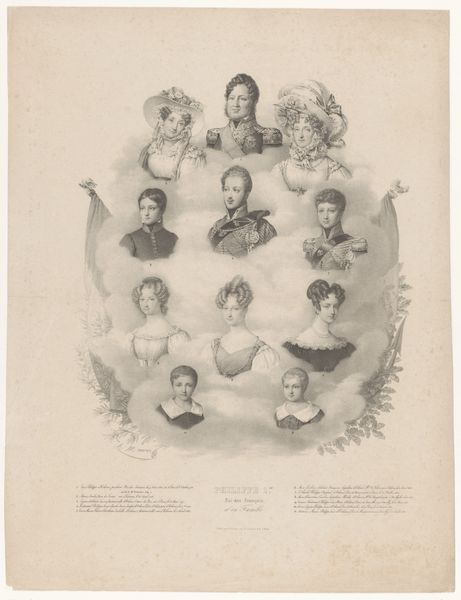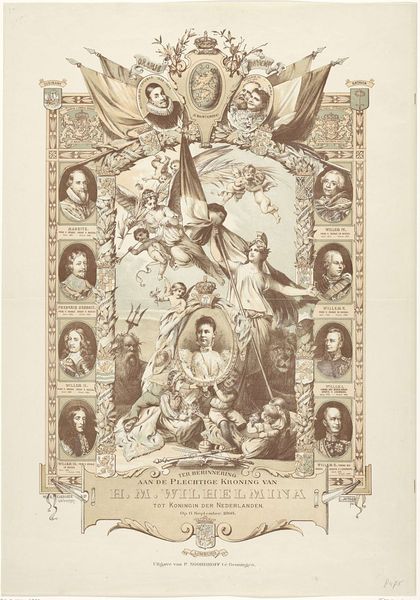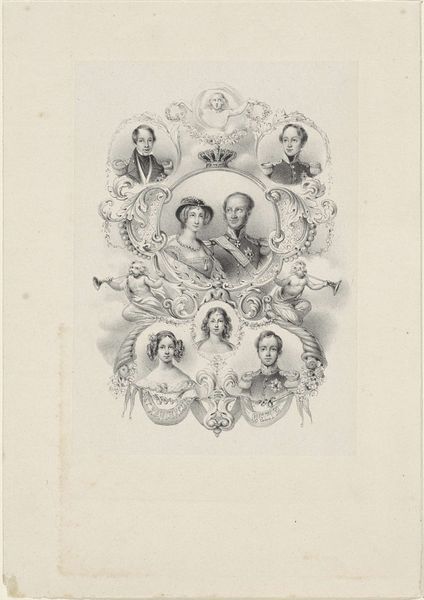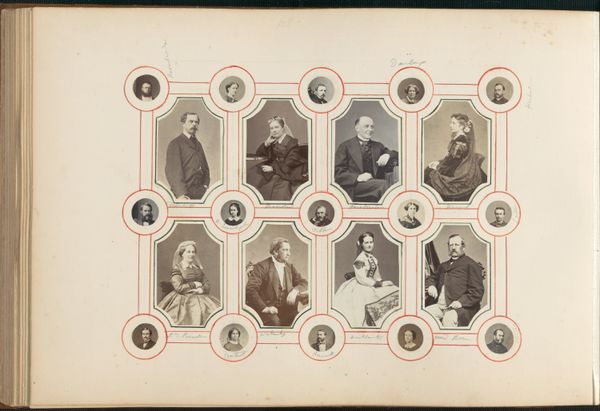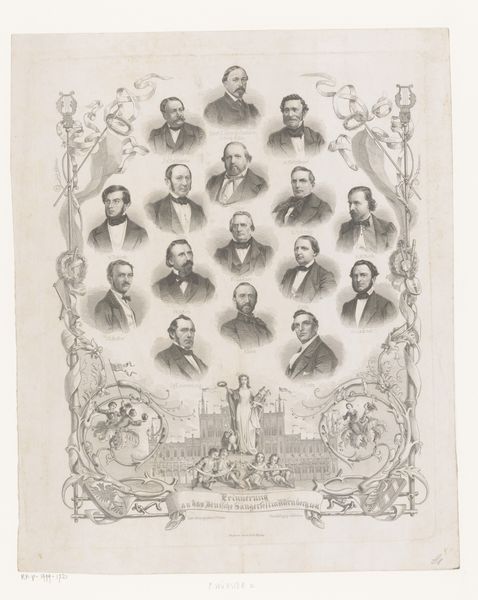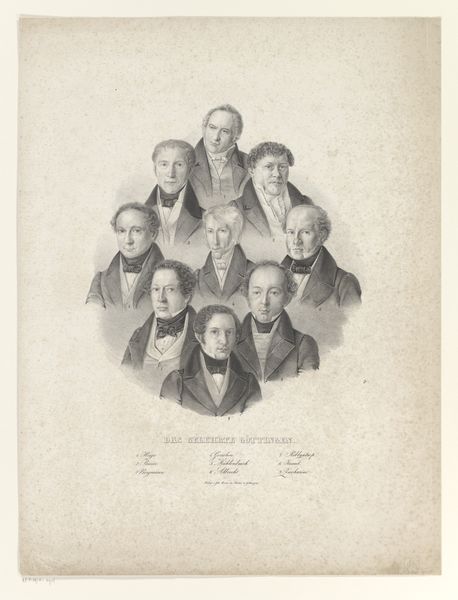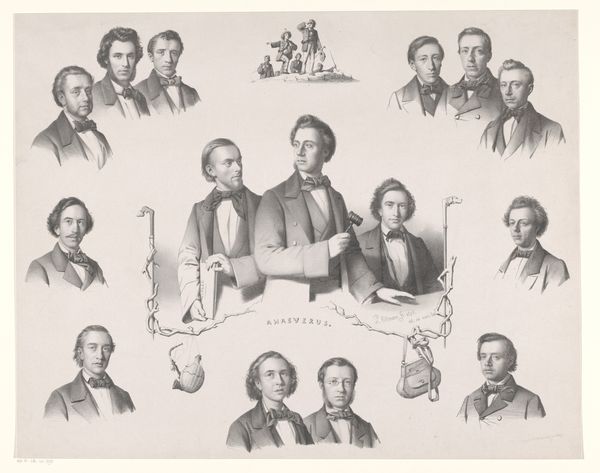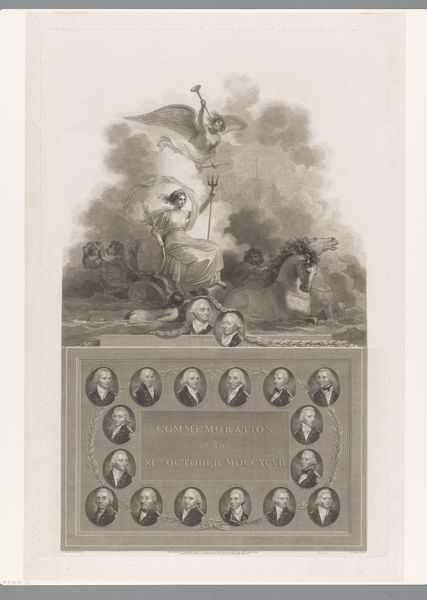
Portretten van Willem I Frederik, koning der Nederlanden, Wilhelmina van Pruisen, hun zoons met echtgenotes, hun dochter met echtgenoot, en acht kleinkinderen c. 1839 - 1840
0:00
0:00
carelchristiaanantonylast
Rijksmuseum
#
portrait
# print
#
group-portraits
#
history-painting
#
academic-art
#
realism
Dimensions: height 520 mm, width 414 mm
Copyright: Rijks Museum: Open Domain
Curator: Welcome! Before us is a group portrait print dating from around 1839-1840 by Carel Christiaan Antony Last. It’s currently held in the Rijksmuseum collection. The print depicts Willem I Frederik, the King of the Netherlands, with his family. Editor: It’s quite a formal affair, isn't it? I'm struck by the repetition of round forms – the portraits are arranged in circles within a larger circle. There’s almost a factory-like approach to representing royalty here. Curator: Precisely. What appears initially as merely a decorative arrangement of royals conveys deeper cultural and political ambitions, it was, in many ways, propaganda to promote the image of a stable monarchy in a turbulent era. Consider the context; it was produced following the secession of Belgium. This print, created with reproductive technologies, offered broad public access to the royal image, underscoring dynastic continuity and solidifying loyalty. Editor: Right. We can see how printmaking was employed for mass production and distribution to reach a broader audience. It’s not about singular artistry but using a craft to reinforce authority. It reminds us of the work involved in the printing itself, from the engraving tools to the printing press—the material labour that helped maintain a king! Curator: Exactly! And note the stylistic elements. The artist adheres to academic art principles and realism in portraiture, enhancing believability and lending credibility to the depicted figures. Also, the composition is not accidental. By putting them into separate frames, it echoes a celestial structure. It's more than a family gathering; it's a constellation. Editor: A family constellation built with the labor of artisans, I would say! What do you make of the contrast of textures, though? Smooth skin against ornate clothing, soft light versus the rigidity of military garb. Curator: It emphasizes the deliberate construction of these people's roles and personae. Each costume is meant to signify stature, honour, and a connection to history and tradition. And each print, meticulously reproduced, extends that message exponentially. Editor: Indeed! It forces us to consider how accessible imagery influences beliefs in power and privilege. By thinking through its method, it reveals this artwork less as a celebration of dynasty and more a reflection of its mechanical reproduction as a system of power. Curator: This print demonstrates art's significant function as an ideological tool, and demonstrates the politics behind images we often consume innocently. Editor: I think viewing this artwork forces us to recognise the materiality inherent within what might seem just to be history, royalty, and lineage.
Comments
No comments
Be the first to comment and join the conversation on the ultimate creative platform.

